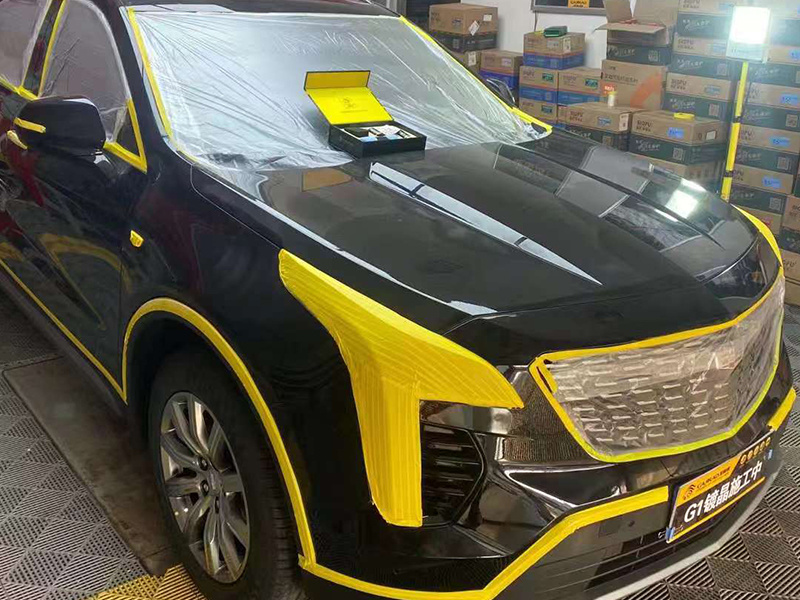Understanding the Production Process at General Washi Tape Factories: A Comprehensive Guide
Release Time:
2025-05-11
Source:
Understanding the Production Process at General Washi Tape Factories
Table of Contents
- 1. Introduction to Washi Tape Manufacturing
- 2. The History of Washi Tape
- 3. Essential Materials Used in Washi Tape Production
- 4. The Step-by-Step Production Process
- 5. Quality Control Measures in Washi Tape Production
- 6. Sustainability Practices in Washi Tape Manufacturing
- 7. Current Design Trends in Washi Tape
- 8. Frequently Asked Questions
- 9. Conclusion
1. Introduction to Washi Tape Manufacturing
Washi tape has become a staple in the world of crafts, stationery, and home decor. Its unique qualities, such as being easy to tear, repositionable, and available in various designs, make it highly sought after. Understanding the production process of washi tape in general factories not only sheds light on the craftsmanship involved but also highlights the attention to detail that ensures quality products. This article explores the entire production journey, from raw materials to the finished product, emphasizing the importance of each step.
2. The History of Washi Tape
Washi tape is rooted in Japanese culture, where it originated as a traditional paper made from the fibers of the mulberry tree. The word "washi" translates to "Japanese paper," characterized by its durability and versatility. Initially used for calligraphy and crafts, washi tape evolved over time. Today, it is produced globally and is a favorite among crafters and DIY enthusiasts. Understanding its history provides a context for its modern production methods and its cultural significance.
3. Essential Materials Used in Washi Tape Production
The quality of washi tape is largely determined by the materials used in its production. The primary components include:
3.1 Washi Paper
Washi paper is the foundation of washi tape. Made from natural fibers, it is known for its strength and aesthetic appeal. Factories often source high-quality washi paper to ensure that the end product meets consumer expectations.
3.2 Adhesive
The adhesive used in washi tape plays a crucial role in its functionality. Most factories utilize water-based adhesives, which are eco-friendly and allow for easy removal without leaving residue. Choosing the right adhesive is essential for producing a high-quality, user-friendly product.
3.3 Printing Inks
The inks used for printing designs on washi tape must be vibrant and durable. Factories often use solvent-based inks, which adhere well to washi paper and maintain their brilliance over time.
4. The Step-by-Step Production Process
The production of washi tape involves several intricate steps, each vital for ensuring the quality and appeal of the final product.
4.1 Design and Planning
Before production begins, the design phase is crucial. Designers create patterns and themes that resonate with current trends and customer preferences. This phase includes selecting colors, motifs, and overall aesthetic elements that will define the tape.
4.2 Coating the Paper
Once the design is finalized, the washi paper undergoes coating. This process involves applying a layer of adhesive to one side of the paper, which will allow the tape to stick effectively. Factories carefully control the thickness of the adhesive to ensure it meets quality standards.
4.3 Printing Procedures
After coating, the paper is printed with the chosen designs. This is typically done using high-speed printing machines that ensure precision and vibrancy. The printing process is closely monitored to maintain consistency across batches, with adjustments made as necessary.
4.4 Cutting and Packaging
Following printing, the coated and printed paper is rolled and cut into standard tape sizes. This stage also involves packaging the finished rolls, which are prepared for distribution. Factories often implement automated cutting machines to enhance efficiency and reduce waste.
5. Quality Control Measures in Washi Tape Production
Maintaining high quality is paramount in the production of washi tape. Factories implement stringent quality control measures throughout each stage of production.
5.1 Material Inspection
Before production begins, all raw materials, including washi paper and adhesives, undergo rigorous inspection to ensure they meet the required standards.
5.2 In-Process Monitoring
During the various production stages, continuous monitoring takes place. This includes checking the adhesive application, the printing quality, and the cutting accuracy to mitigate any potential issues that might affect the final product.
5.3 Final Product Evaluation
Once the production is complete, a sample of the finished tapes is evaluated for quality assurance. This includes testing the adhesive properties, the vibrancy of colors, and the overall finish of the product.
6. Sustainability Practices in Washi Tape Manufacturing
As environmental concerns grow, many washi tape manufacturers are adopting sustainable practices.
6.1 Eco-Friendly Materials
More factories are sourcing materials that are sustainable and biodegradable. This includes using recycled paper and eco-friendly adhesives that minimize environmental impact.
6.2 Energy-Efficient Production
Modern factories are increasingly utilizing energy-efficient machinery and processes. This reduces their carbon footprint and helps in conserving resources.
6.3 Waste Reduction
Many factories are implementing waste reduction strategies, such as recycling excess materials and minimizing water usage during production.
7. Current Design Trends in Washi Tape
The washi tape market is constantly evolving, with new design trends emerging regularly.
7.1 Minimalistic Designs
Minimalistic designs have gained popularity, with simple patterns and colors appealing to a broad audience. These designs often focus on elegance and versatility.
7.2 Nature-Inspired Themes
Themes inspired by nature, including floral patterns and earthy tones, resonate with consumers seeking a connection to the environment.
7.3 Customizable Options
Customized washi tape, allowing consumers to create their designs, is becoming a trend. Factories are adapting to this demand by offering personalized printing services.
8. Frequently Asked Questions
8.1 What is washi tape made of?
Washi tape is primarily made from washi paper, which is crafted from natural fibers, and is coated with a removable adhesive.
8.2 How is washi tape printed?
Washi tape is printed using high-speed printing machines that apply vibrant inks to the coated side of the washi paper.
8.3 Is washi tape eco-friendly?
Many washi tape manufacturers are shifting towards eco-friendly materials and sustainable practices, making it a more environmentally conscious choice.
8.4 Can washi tape be reused?
Yes, washi tape can be repositioned and reused multiple times without leaving residue, making it a versatile option for various applications.
8.5 What are the common uses for washi tape?
Washi tape is commonly used in arts and crafts, scrapbooking, gift wrapping, and as decorative elements in home decor.
9. Conclusion
Understanding the production process at general washi tape factories reveals the intricate steps and careful considerations that go into manufacturing this beloved product. From selecting quality materials to implementing sustainable practices, every stage plays a vital role in creating the high-quality washi tape that consumers cherish. As the market continues to evolve with new designs and eco-friendly practices, we can appreciate the craftsmanship and dedication that define the washi tape industry. Whether for personal use or creative projects, washi tape remains a versatile tool that captures the imagination and adds a touch of beauty to everyday life.
Related Information
Top 10 Creative Uses for EVO Colored Masking Tape You Need to Try
Top 10 Creative Uses for EVO Colored Masking Tape You Need to Try Introduction to EVO Colored Masking Tape EVO Colored Masking Tape isn’t just for painters; it’s a versatile tool that can be employed in myriad ways throughout your home, office, or classroom. This colorful tape is not only easy to tear and reposition but also leaves minimal residue, making it an ideal choice for creative projects
The Essential Guide to Automotive Refinish Washi Tape: Enhancing Precision in Automotive Projects
Automotive Refinish Washi Tape is a specialized adhesive tape designed to meet the unique needs of automotive refinishing tasks. Made from high-quality paper, it is known for its versatility, ease of use, and ability to provide clean paint lines. The lightweight and flexible nature of Washi Tape makes it an excellent choice for intricate designs and delicate surfaces, which is essential in the aut
Understanding the Production Process at General Washi Tape Factories: A Comprehensive Guide
Understanding the Production Process at General Washi Tape Factories Table of Contents 1. Introduction to Washi Tape Manufacturing 2. The History of Washi Tape 3. Essential Materials Used in Washi Tape Production 4. The Step-by-Step Production Process 4.1 Design and Planning 4.2 Coating the Paper 4.3 Printing Procedures 4.4 Cutting and Packaging 5. Q
Exploring the Leading Companies in High Adhesive Washi Tape Production
High adhesive washi tape has become increasingly popular in various applications, from crafting to packaging. This versatile product is known for its decorative appeal and strong adhesion, making it a favorite among artists, DIY enthusiasts, and businesses looking for reliable packaging solutions. Understanding the landscape of companies that specialize in high adhesive washi tape is essential for










